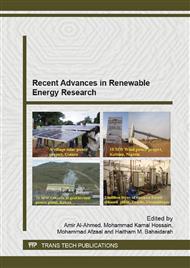p.1
p.33
p.45
p.51
p.59
p.65
p.73
p.94
Renewable Energy for Sustainable Socio-Economic Development in Developing Countries: A Case Study of Sub-Saharan Africa
Abstract:
Worldwide, developing countries struggle to overcome numerous problems that constrain their socio-economic development. Sub-Saharan African countries represent a good example of developing countries with serious developmental challenges. Thus, this chapter presents a critical analysis on the socio-economic situation in Sub-Saharan Africa and the links between limited access to modern energy services and the prevailing socio-economic circumstance. It discusses the expected roles of renewable energy technologies in increasing energy access in the region and highlights important factors that influence extensive deployment of renewable energy technologies for sustainable development. Reliable statistical data on both the Human Development Index (HDI) and Energy Development Index (EDI) rankings indicate that most countries in Sub-Saharan Africa lie far below the world average and as a region, Sub-Saharan Africa scores least. There is high level of poverty and inadequate social services, which is attributed to acute shortage of modern energy services. In Sub-Saharan Africa, over 70% of the population lack reliable access to electricity and modern cooking fuels, which represents a large proportion of the „energy poor‟ in the world. Lack of access to modern energy services limits economic and agricultural opportunities, negatively affects the environment, promotes gender inequality and constrains delivery of social services such as health care delivery system and education. Thus, one of the biggest developmental challenges in Sub-Saharan Africa is to find effective and pragmatic solutions for increasing energy access. Sub-Saharan Africa is richly endowed with renewable energy resources such as biomass, wind, solar, hydropower and geothermal, which largely remain unexploited. The renewable energy resources are widely available throughout the region unlike the conventional fossil-based resources, that is, coal, oil and gas, which are concentrated within very few countries. Therefore, the renewable energy resources if properly and fully utilized can provide clean, affordable and reliable energy services that will promote socio-economic activities and support sustainable development.
Info:
Periodical:
Pages:
33-44
Citation:
Online since:
July 2015
Authors:
Price:
Сopyright:
© 2015 Trans Tech Publications Ltd. All Rights Reserved
Share:
Citation:


